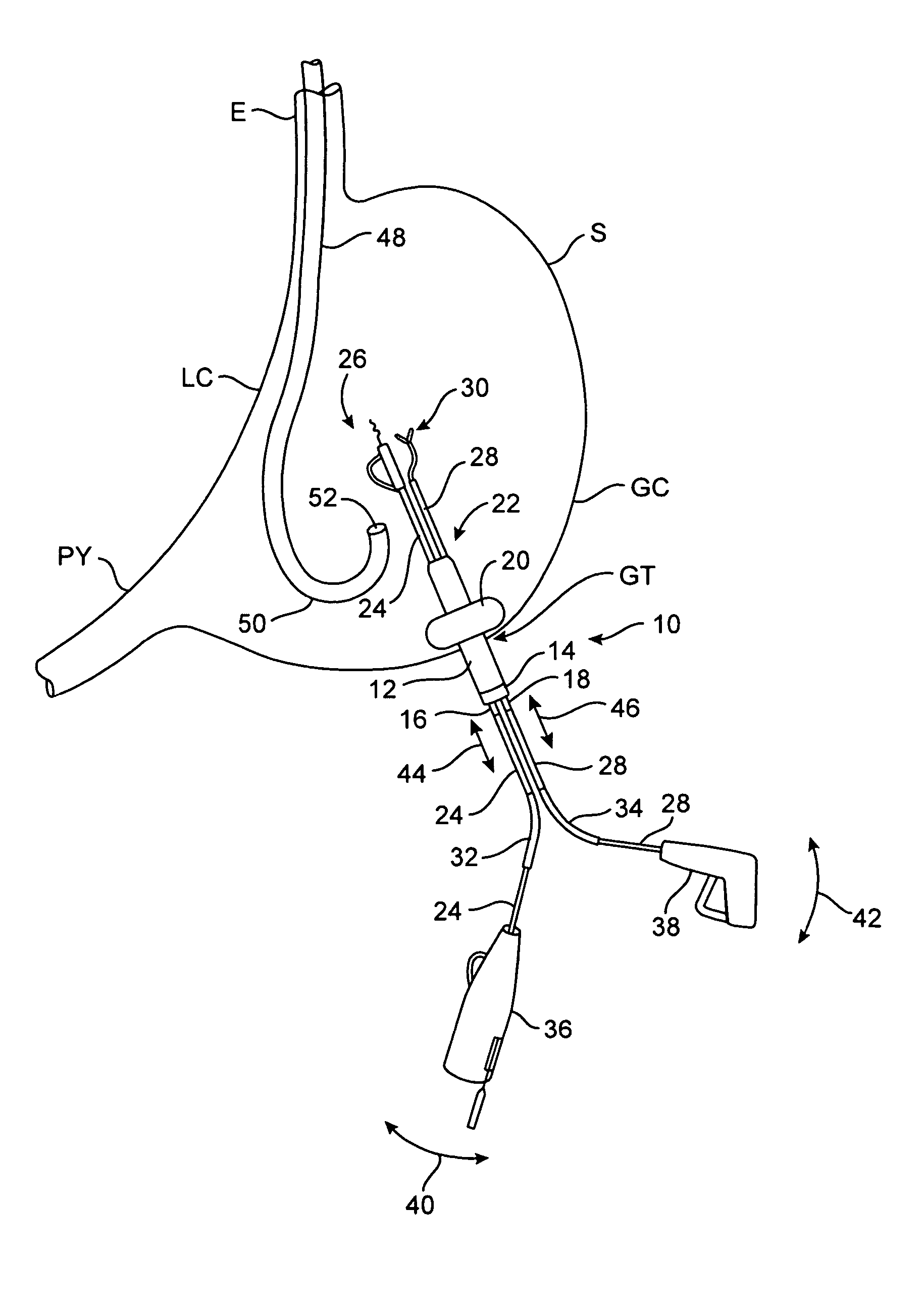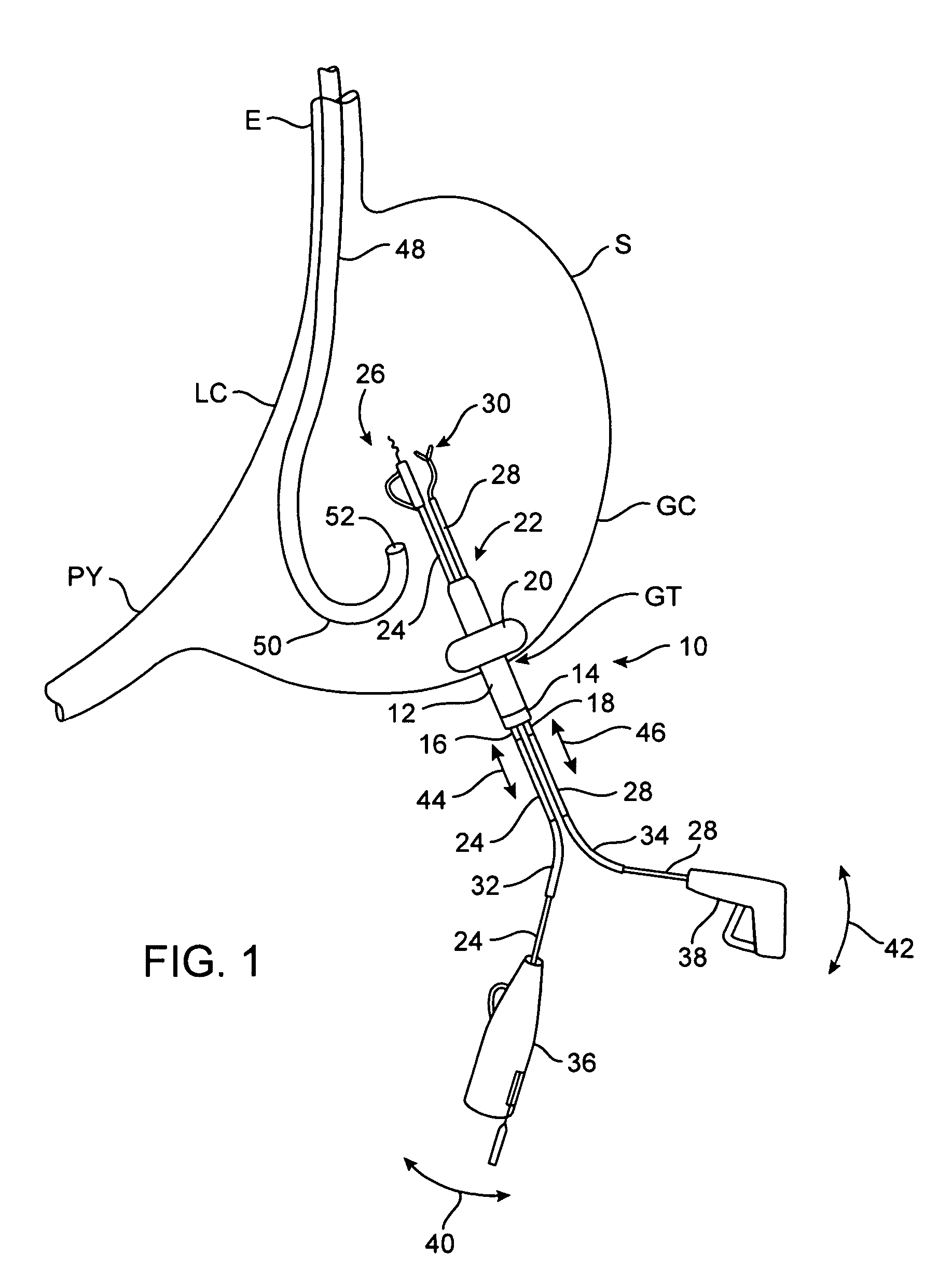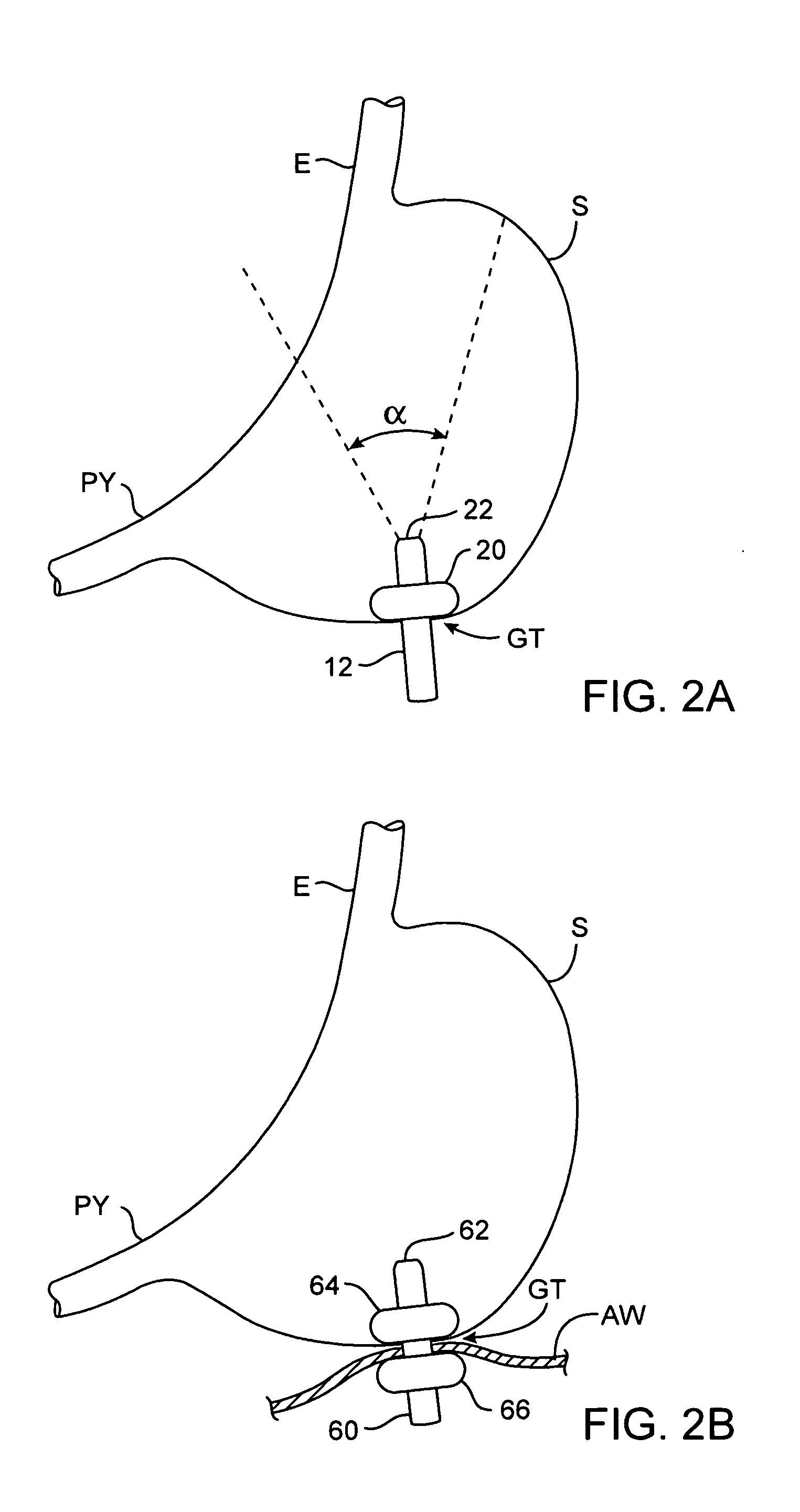Apparatus and methods for transgastric tissue manipulation
a transgastric tissue and apparatus technology, applied in the field of apparatus and methods for accessing and manipulating tissue, can solve the problems of atypical diarrhea, electrolytic imbalance, and many life-threatening problems
- Summary
- Abstract
- Description
- Claims
- Application Information
AI Technical Summary
Benefits of technology
Problems solved by technology
Method used
Image
Examples
Embodiment Construction
[0032] Generally, access to the interior of a hollow body organ for manipulation of the tissue may be accomplished through a trocar, port, or other insert. This trocar, port, or insert may be positioned through a small incision on the patient's abdomen and through a gastrostomy made through the patient's stomach for enabling access therethrough with multiple tools preferably via a single access path.
[0033] One of the applications for creating a single transgastric access path through which multiple tools may be advanced is in manipulating the tissue and, e.g., creating tissue plications, from within the hollow body organ. Tissue plications may be formed using various tools for approximating tissue in performing various gastroplasty procedures, e.g., for use in treating morbid obesity.
[0034] In creating tissue plications, a tissue plication tool having a distal tip may be advanced through the trocar and into the stomach. The tissue may be engaged or grasped and the engaged tissue m...
PUM
 Login to View More
Login to View More Abstract
Description
Claims
Application Information
 Login to View More
Login to View More - R&D
- Intellectual Property
- Life Sciences
- Materials
- Tech Scout
- Unparalleled Data Quality
- Higher Quality Content
- 60% Fewer Hallucinations
Browse by: Latest US Patents, China's latest patents, Technical Efficacy Thesaurus, Application Domain, Technology Topic, Popular Technical Reports.
© 2025 PatSnap. All rights reserved.Legal|Privacy policy|Modern Slavery Act Transparency Statement|Sitemap|About US| Contact US: help@patsnap.com



